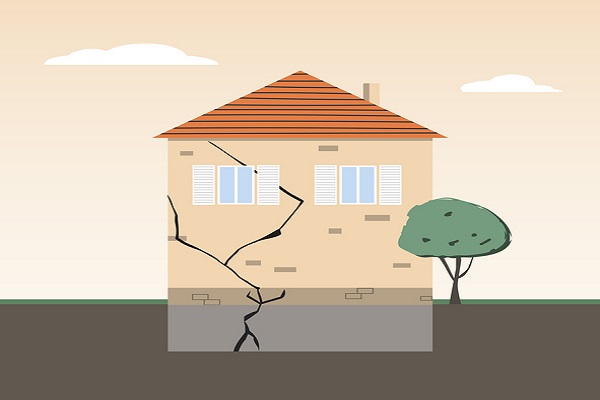Many people are shocked to learn that 25% of all new homes ultimately suffer from some type of structural distress. Many times, these issues center on foundation problems. To protect yourself from huge repair costs, learn how to identify telltale signs of a bad foundation.
What causes foundation problems and failures?
While just about every foundation eventually sinks deeper into the ground, a good builder will take steps to minimize this issue. This includes accounting for local climate and soil conditions during construction. But when they fail to account for these issues, builders may inadvertently pave the way for a foundation dilemma.
At the same time, natural phenomena can also cause perfectly good foundations to lose their structural integrity. Whatever the cause, when foundations begin to fail, homeowners are often left with the bill, especially if they failed to acquire a long-term structural warranty. But we’ll show you 14 signs of foundation problems that can help you address any issue before they get too far out of hand.
14 signs of foundation problems to watch for
It’s not always easy for inexperienced house hunters to spot a foundation problem. Sometimes, sellers may hide signs of distress by making a few strategic repairs or by adding some well-placed spackle and paint. If you do see any of the following signs, you should be leery of a potential structural defect:
- A curving/bulging block foundation or crumbling concrete
- Splitting or cracking brick facades
- Mortar cracks between brick, especially above window frames
- Windows and doors that stick or no longer latch
- Crown molding separation, especially where walls meet
- Cracks in the exterior concrete or interior walls—especially above doorways, windows, and where ceilings and walls join
- Cracks in floor tile
- Sloping staircases, floors, or walls
- Water in the basement, around the home’s perimeter, or in the crawlspace
- Signs of excessive caulking used to seal very large cracks or gaps
- Separation between vertical and horizontal trim around doorway
- Exterior brick separating from a window frame
- Gaps between walls and ceilings
- Brick facades pulling away from the house
What if there are no signs of problems?
Unfortunately, many foundation problems develop without much warning. And because they can take years to show themselves, these structural issues may occur long after a typical builders warranty has expired. This usually spells bad news for homeowners, who must often take out additional loans to pay for repairs. This is why it’s so important to regularly check for signs of foundation problems. Use the 14 signs above to keep yourself ahead of any potential issues in the long term.
For this reason, many homeowners choose to secure their home’s future by asking their builders to acquire an additional 10-year structural warranty from 2-10 Home Buyers Warranty (2-10 HBW). In addition to providing full coverage for foundation problems, a structural warranty from your builder can also cover other key structural components, including girders, beams, load-bearing walls and partitions, footings, columns, roof framing systems and floor framing.
When you consider that the average structural defect costs between $42,000 and $113,000 to repair, it’s clear why so many new homeowners are so interested in warranty coverage. After all, when it comes to protecting what will probably be the largest investment of your lifetime, risk just isn’t an option.
2-10 HBW offers the most comprehensive home warranty coverage for homeowners. Let us help you protect your home.








